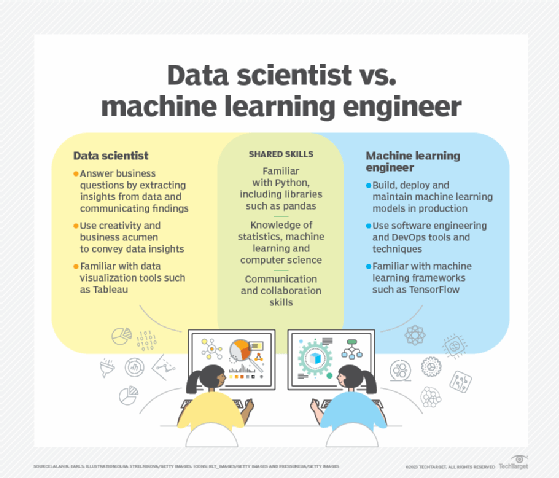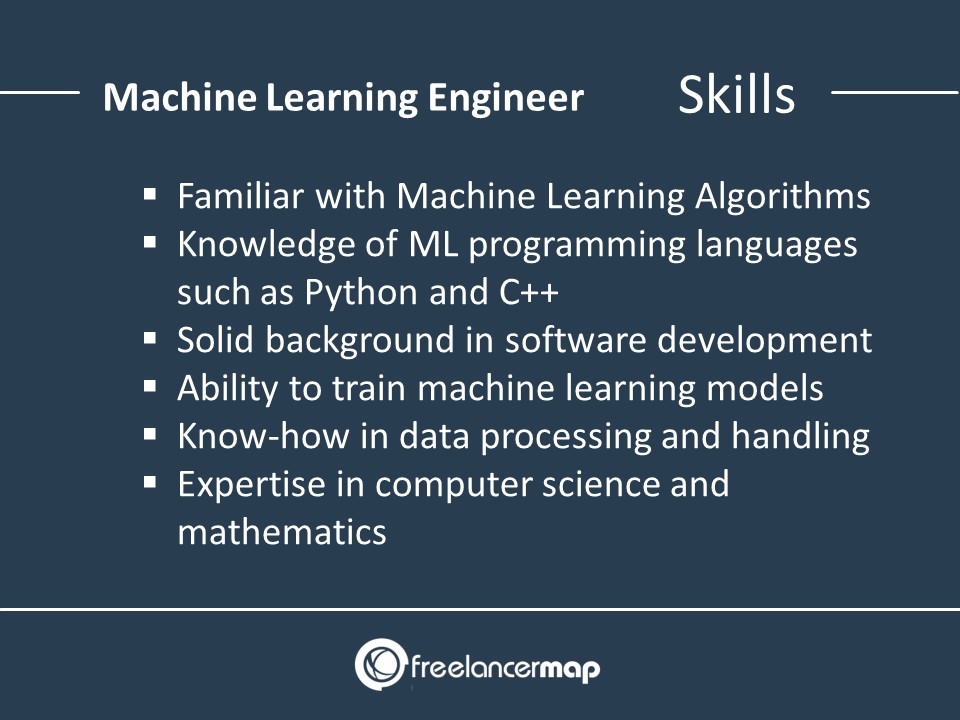All Categories
Featured
Table of Contents
- – Little Known Questions About Machine Learning ...
- – See This Report on Machine Learning/ai Engineer
- – How Interview Kickstart Launches Best New Ml ...
- – How Software Engineering Vs Machine Learning ...
- – More About Llms And Machine Learning For Sof...
- – How Machine Learning Engineer Course can Sav...
You most likely recognize Santiago from his Twitter. On Twitter, daily, he shares a great deal of useful aspects of equipment learning. Many thanks, Santiago, for joining us today. Welcome. (2:39) Santiago: Thanks for inviting me. (3:16) Alexey: Prior to we enter into our major topic of moving from software design to artificial intelligence, perhaps we can begin with your history.
I began as a software program programmer. I mosted likely to college, got a computer system scientific research level, and I began constructing software application. I assume it was 2015 when I made a decision to go for a Master's in computer technology. Back then, I had no idea regarding equipment understanding. I didn't have any kind of passion in it.
I understand you've been making use of the term "transitioning from software application engineering to device understanding". I like the term "including to my ability established the artificial intelligence skills" more since I assume if you're a software designer, you are currently giving a whole lot of value. By integrating maker discovering currently, you're enhancing the impact that you can have on the industry.
Alexey: This comes back to one of your tweets or perhaps it was from your training course when you contrast 2 strategies to discovering. In this case, it was some trouble from Kaggle about this Titanic dataset, and you just learn how to fix this issue utilizing a particular tool, like choice trees from SciKit Learn.
Little Known Questions About Machine Learning Engineer Vs Software Engineer.
You first find out mathematics, or straight algebra, calculus. When you understand the mathematics, you go to equipment discovering concept and you discover the concept. After that 4 years later, you finally involve applications, "Okay, exactly how do I use all these four years of math to resolve this Titanic issue?" ? In the previous, you kind of conserve on your own some time, I assume.
If I have an electric outlet here that I need changing, I do not wish to go to college, invest four years recognizing the mathematics behind electricity and the physics and all of that, just to change an outlet. I prefer to start with the outlet and find a YouTube video clip that helps me go via the issue.
Santiago: I truly like the idea of beginning with a trouble, trying to toss out what I know up to that trouble and comprehend why it doesn't function. Grab the tools that I need to address that issue and start digging deeper and much deeper and much deeper from that point on.
Alexey: Possibly we can speak a little bit regarding learning sources. You mentioned in Kaggle there is an intro tutorial, where you can obtain and find out just how to make decision trees.
The only requirement for that course is that you understand a little bit of Python. If you go to my profile, the tweet that's going to be on the top, the one that claims "pinned tweet".
See This Report on Machine Learning/ai Engineer

Even if you're not a developer, you can begin with Python and work your means to more artificial intelligence. This roadmap is concentrated on Coursera, which is a platform that I truly, actually like. You can audit every one of the training courses totally free or you can spend for the Coursera registration to obtain certifications if you wish to.
That's what I would certainly do. Alexey: This returns to among your tweets or perhaps it was from your program when you contrast 2 techniques to learning. One strategy is the issue based strategy, which you simply spoke around. You locate a problem. In this situation, it was some trouble from Kaggle regarding this Titanic dataset, and you simply learn how to solve this problem using a details device, like choice trees from SciKit Learn.

You initially learn math, or direct algebra, calculus. After that when you recognize the mathematics, you go to maker discovering concept and you learn the concept. Then 4 years later, you ultimately involve applications, "Okay, how do I utilize all these four years of mathematics to address this Titanic trouble?" ? In the previous, you kind of save yourself some time, I think.
If I have an electrical outlet below that I need replacing, I do not intend to most likely to college, invest 4 years understanding the math behind electricity and the physics and all of that, simply to alter an electrical outlet. I prefer to begin with the outlet and discover a YouTube video clip that assists me experience the problem.
Santiago: I actually like the concept of beginning with a trouble, trying to toss out what I recognize up to that problem and recognize why it does not function. Get hold of the devices that I require to solve that trouble and begin excavating deeper and much deeper and deeper from that factor on.
Alexey: Possibly we can talk a little bit concerning discovering resources. You stated in Kaggle there is an introduction tutorial, where you can obtain and discover how to make choice trees.
How Interview Kickstart Launches Best New Ml Engineer Course can Save You Time, Stress, and Money.
The only need for that course is that you understand a little bit of Python. If you're a designer, that's an excellent base. (38:48) Santiago: If you're not a developer, then I do have a pin on my Twitter account. If you most likely to my account, the tweet that's mosting likely to get on the top, the one that claims "pinned tweet".
Also if you're not a designer, you can begin with Python and function your means to more artificial intelligence. This roadmap is concentrated on Coursera, which is a platform that I truly, truly like. You can examine all of the courses absolutely free or you can spend for the Coursera subscription to obtain certifications if you wish to.
How Software Engineering Vs Machine Learning (Updated For ... can Save You Time, Stress, and Money.
Alexey: This comes back to one of your tweets or possibly it was from your program when you contrast 2 strategies to learning. In this case, it was some trouble from Kaggle regarding this Titanic dataset, and you just discover how to fix this problem utilizing a details device, like choice trees from SciKit Learn.

You initially find out mathematics, or straight algebra, calculus. When you recognize the math, you go to equipment discovering concept and you discover the theory.
If I have an electric outlet below that I need replacing, I don't desire to go to university, invest four years comprehending the math behind power and the physics and all of that, just to alter an electrical outlet. I would rather begin with the outlet and locate a YouTube video that assists me experience the trouble.
Negative analogy. You get the concept? (27:22) Santiago: I actually like the concept of beginning with a problem, trying to toss out what I know approximately that issue and comprehend why it doesn't function. Then grab the devices that I require to address that problem and begin excavating much deeper and deeper and much deeper from that factor on.
Alexey: Possibly we can talk a little bit about finding out sources. You pointed out in Kaggle there is an introduction tutorial, where you can obtain and discover how to make decision trees.
More About Llms And Machine Learning For Software Engineers
The only demand for that training course is that you know a little bit of Python. If you go to my profile, the tweet that's going to be on the top, the one that states "pinned tweet".
Also if you're not a programmer, you can start with Python and work your method to even more artificial intelligence. This roadmap is concentrated on Coursera, which is a platform that I actually, actually like. You can audit every one of the training courses free of charge or you can pay for the Coursera subscription to get certificates if you wish to.
Alexey: This comes back to one of your tweets or perhaps it was from your program when you compare two approaches to understanding. In this instance, it was some trouble from Kaggle about this Titanic dataset, and you just discover how to address this trouble using a specific device, like decision trees from SciKit Learn.
You first discover mathematics, or straight algebra, calculus. After that when you know the mathematics, you most likely to artificial intelligence concept and you discover the concept. Four years later, you lastly come to applications, "Okay, exactly how do I use all these four years of math to address this Titanic trouble?" ? In the former, you kind of conserve yourself some time, I assume.
How Machine Learning Engineer Course can Save You Time, Stress, and Money.
If I have an electric outlet right here that I need changing, I don't want to go to university, invest 4 years recognizing the math behind electricity and the physics and all of that, just to change an outlet. I prefer to begin with the electrical outlet and discover a YouTube video clip that helps me go with the problem.
Negative example. You get the idea? (27:22) Santiago: I truly like the idea of starting with a trouble, trying to throw away what I understand approximately that problem and comprehend why it doesn't function. After that get hold of the tools that I require to fix that trouble and begin digging much deeper and much deeper and deeper from that factor on.

Alexey: Maybe we can talk a bit concerning discovering sources. You pointed out in Kaggle there is an introduction tutorial, where you can obtain and discover how to make decision trees.
The only need for that training course is that you recognize a little of Python. If you're a programmer, that's an excellent base. (38:48) Santiago: If you're not a developer, then I do have a pin on my Twitter account. If you most likely to my profile, the tweet that's mosting likely to get on the top, the one that says "pinned tweet".
Also if you're not a developer, you can start with Python and work your method to even more artificial intelligence. This roadmap is concentrated on Coursera, which is a platform that I actually, really like. You can audit every one of the training courses totally free or you can pay for the Coursera membership to obtain certificates if you intend to.
Table of Contents
- – Little Known Questions About Machine Learning ...
- – See This Report on Machine Learning/ai Engineer
- – How Interview Kickstart Launches Best New Ml ...
- – How Software Engineering Vs Machine Learning ...
- – More About Llms And Machine Learning For Sof...
- – How Machine Learning Engineer Course can Sav...
Latest Posts
Software Developer (Sde) Interview & Placement Guide – How To Stand Out
The Best Free Websites To Learn Data Structures & Algorithms
A Non-overwhelming List Of Resources To Use For Software Engineering Interview Prep
More
Latest Posts
Software Developer (Sde) Interview & Placement Guide – How To Stand Out
The Best Free Websites To Learn Data Structures & Algorithms
A Non-overwhelming List Of Resources To Use For Software Engineering Interview Prep